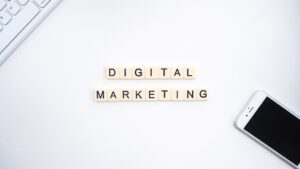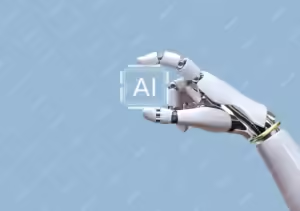Digital Marketing in the Era of AI: Latest Trends, Traditional Approaches, and Transformational Examples
Digital marketing has evolved dramatically over the past decade, with Artificial Intelligence (AI) playing a pivotal role in transforming the landscape. From customer segmentation to personalized content, AI technologies have empowered marketers with innovative tools to optimize strategies, predict outcomes, and streamline processes. While traditional digital marketing focused on broad audience outreach and relatively basic automation, today’s AI-driven techniques delve into hyper-personalization, predictive analytics, and real-time optimization. This transformation has not only reshaped the way brands connect with their customers but also improved how marketing teams plan and execute campaigns.
The Evolution of Digital Marketing
Digital marketing, in its early years, revolved around fundamental practices such as Search Engine Optimization (SEO), Pay-Per-Click (PPC) advertising, email marketing, and content marketing. The traditional marketing approaches were based on strategies like keyword targeting, generic email campaigns, and manually set up ad campaigns, with limited scope for personalization and optimization. These traditional methods had limitations:
- Broad Targeting: While effective to some extent, traditional digital marketing strategies lacked precision. Audience targeting was largely based on demographics and generalized interests.
- Basic Automation: Early email marketing and ad automation could execute pre-defined workflows but couldn’t adapt to dynamic customer behavior in real-time.
- Labor-Intensive Processes: Setting up campaigns, analyzing data, and making optimizations were manual and time-consuming tasks for marketers.
These limitations opened up significant opportunities for Artificial Intelligence to revolutionize the field by enabling marketers to reach audiences more effectively and efficiently.
The Role of AI in Digital Marketing Today
AI in digital marketing is not just an enhancement but a revolutionary change. Here’s how AI has influenced various facets of digital marketing:
- Personalization at Scale
One of the primary benefits of AI is its ability to personalize content and marketing messages at scale. AI-powered algorithms can analyze large sets of data from multiple sources—such as browsing behavior, purchase history, and even real-time location data—to deliver highly personalized content.
- Example: Netflix and Amazon are pioneers of AI-based personalization. Netflix uses AI to recommend shows and movies based on individual viewing habits, while Amazon suggests products based on past purchases and browsing patterns.
Marketers can now create tailored emails, personalized ad experiences, and individualized website content for millions of users without manual intervention. This hyper-personalization enhances user experience, increases engagement, and ultimately drives more conversions.
- AI-Powered Content Creation and Optimization
AI tools like OpenAI’s GPT models are now being used to create and optimize content, from blog posts and social media captions to video scripts and product descriptions. These tools analyze past performance, SEO trends, and audience preferences to generate optimized content that resonates with the target audience.
- Example: HubSpot’s AI-powered content strategy tool helps marketers generate ideas based on competitive research, popular search terms, and content performance data.
Moreover, AI-powered tools can test various forms of content (e.g., headlines, images, call-to-actions) in real time to see which version performs best—leading to continuous optimization of campaigns.
- Predictive Analytics
Predictive analytics, driven by AI, allows marketers to forecast customer behavior based on historical data. By identifying patterns and trends, predictive models can help businesses anticipate customer needs, predict churn, and determine the potential lifetime value of a customer.
- Example: Spotify uses predictive analytics to suggest playlists and songs based on the user’s previous listening history, time of day, and even their mood.
For marketers, predictive analytics can help with lead scoring, churn prediction, and product recommendations—allowing for more informed decision-making and proactive customer engagement strategies.
- Chatbots and AI-Driven Customer Support
AI-powered chatbots have revolutionized customer support and engagement, offering 24/7 assistance and significantly improving customer experience. These chatbots can handle basic customer queries, guide users through purchasing processes, and even provide personalized product recommendations.
- Example: Sephora’s chatbot, which leverages AI to assist customers in finding the right beauty products based on their preferences, has been widely regarded as a game-changer in customer support.
AI chatbots also contribute to lead generation by qualifying prospects and gathering valuable information before passing them on to human sales representatives. They enable businesses to maintain an always-on presence, ensuring that customers are assisted even during off-hours.
- Voice Search and Smart Assistants
With the rise of voice search and smart assistants like Amazon’s Alexa, Google Assistant, and Apple’s Siri, AI is changing the way consumers search for products and services. Voice search optimization has become a key area of focus for digital marketers as more people use their voice to search rather than typing queries into search engines.
- Example: Domino’s Pizza has integrated with Amazon Alexa, allowing users to order pizza via voice commands, providing a seamless ordering experience.
Marketers now have to optimize content for voice search by focusing on conversational keywords and creating content that answers specific questions, as voice search queries are often more direct and question-based.
- Programmatic Advertising
AI has also transformed digital advertising with programmatic ad buying. AI algorithms enable real-time bidding, which automates the process of purchasing ad space, allowing marketers to target users more accurately and at the right time.
- Example: Google Ads uses machine learning to optimize bidding strategies in real-time, ensuring that ads are shown to the right audience based on intent and past behavior.
By leveraging AI, marketers can maximize their ad budgets and reduce wasted spend, as ads are served only to the most relevant audience segments.
Traditional Digital Marketing vs. AI-Driven Approaches
1. Targeting:
- Traditional: Relying on demographics, location, and basic user interests to define target audiences.
- AI-Driven: Using machine learning to analyze behavior, purchase history, and real-time data to create highly targeted segments based on user intent and preferences.
2. Content Creation:
- Traditional: Manual content creation and static email campaigns, relying on human input for ideation and optimization.
- AI-Driven: AI-powered tools like Grammarly, Jarvis, and ChatGPT help create personalized content, optimize headlines, and ensure SEO best practices are followed automatically.
3. Automation:
- Traditional: Pre-scheduled emails, social media posts, and ads with limited customization.
- AI-Driven: Dynamic, real-time content and ad customization based on user interaction, ensuring more relevant messaging and higher engagement.
4. Customer Engagement:
- Traditional: Limited interaction outside of business hours, with customer support depending on human agents.
- AI-Driven: 24/7 engagement through AI chatbots, predictive lead nurturing, and dynamic user experiences tailored to individual needs.
Emerging AI Trends in Digital Marketing
As AI continues to evolve, new trends are shaping the future of digital marketing:
- AI-Driven Video Marketing: Video content remains king, and AI is transforming how brands create, edit, and distribute video. AI tools can generate personalized video content, analyze viewer engagement, and suggest real-time optimizations.
- Deep Learning for Image and Voice Recognition: AI-powered tools for image and voice recognition are becoming crucial for brands looking to tap into visually-driven platforms like Instagram and TikTok or leverage voice search technologies.
- Emotional AI: This trend involves analyzing emotions from text, voice, and facial expressions to tailor marketing messages that resonate on a deeper level with audiences. Emotional AI can help businesses gauge how customers feel about their products and services in real-time.
- AI and Augmented Reality (AR): AR, combined with AI, is creating immersive experiences for consumers. From virtual try-ons in the fashion industry to AR-powered product demos, this trend enhances user engagement.
- Example: IKEA’s Place app allows users to virtually place furniture in their homes using AR, enhancing the shopping experience by giving customers a better sense of how products will fit in their space.
Challenges of AI in Digital Marketing
While AI brings many advantages, it also presents challenges that businesses need to navigate:
- Data Privacy and Ethics: With AI relying heavily on consumer data to deliver personalized experiences, concerns around data privacy and security have increased. Regulations like GDPR and CCPA have introduced stricter guidelines, making it essential for marketers to use data responsibly.
- Over-Reliance on Automation: While AI can optimize many marketing processes, over-reliance on automation may reduce the human touch in customer interactions. It is important to strike a balance between AI-driven personalization and authentic, human connection.
- Algorithm Bias: AI models can sometimes reflect biases in the data they are trained on. For example, an AI algorithm that relies on historical data may reinforce certain stereotypes or marginalize specific groups.
Future of AI in Digital Marketing
The future of AI in digital marketing looks promising, with continued advancements in machine learning, natural language processing, and cognitive computing. Here’s what the future may hold:
- Hyper-Personalization: AI will continue to push the boundaries of personalization. Brands will be able to deliver one-to-one marketing messages to users across all touchpoints, from social media ads to personalized website content.
- AI-Generated Influencers: AI-generated influencers, like Lil Miquela, a virtual Instagram influencer, are expected to become more common. These digital avatars offer brands a new way to engage with audiences while maintaining full control over the influencer’s messaging.
- Autonomous Marketing Systems: With advancements in AI, we may see the rise of fully autonomous marketing systems that require little to no human intervention. These systems will be able to create, execute, and optimize marketing campaigns from start to finish.


